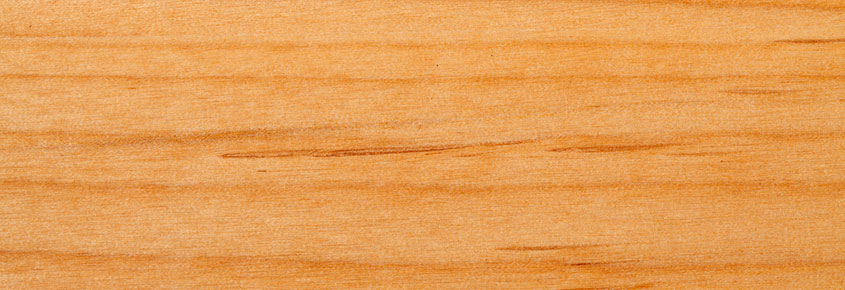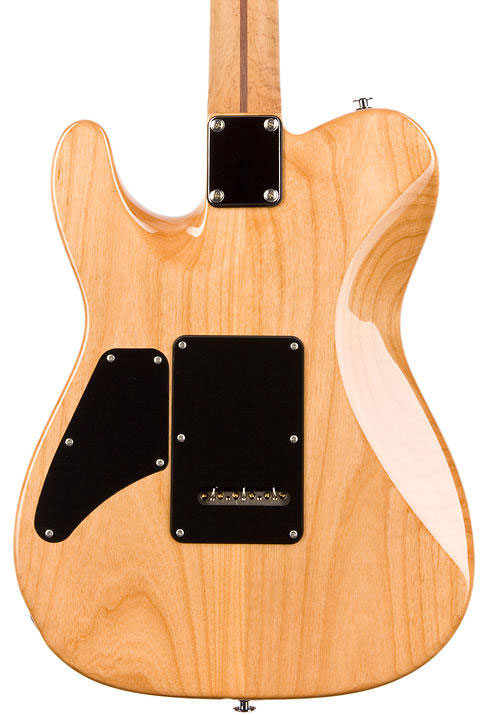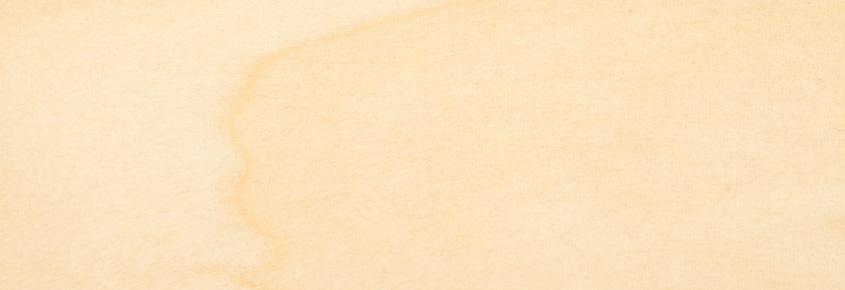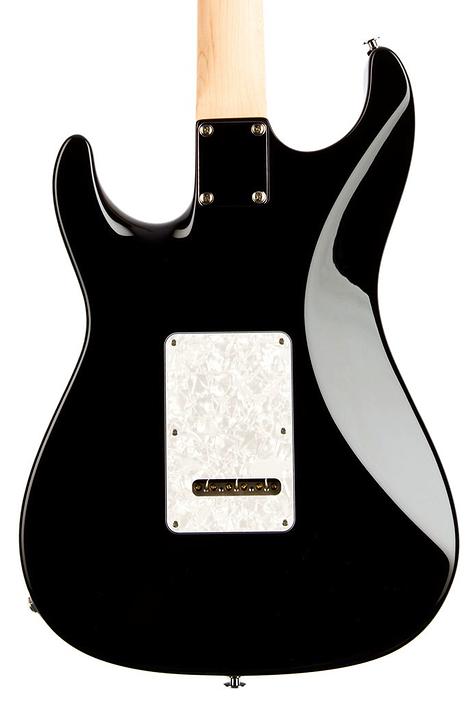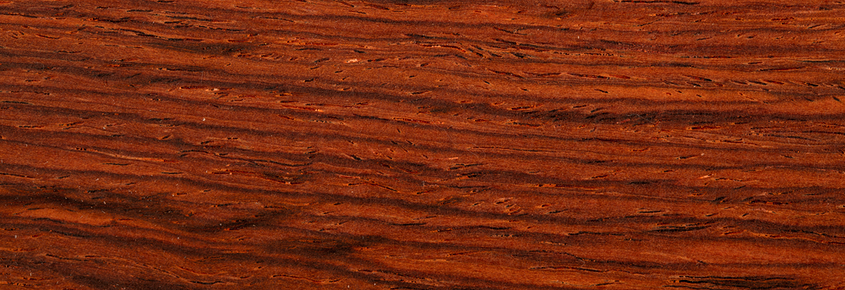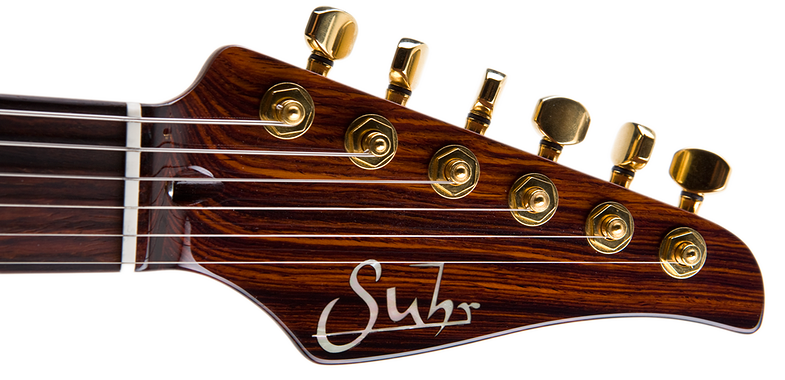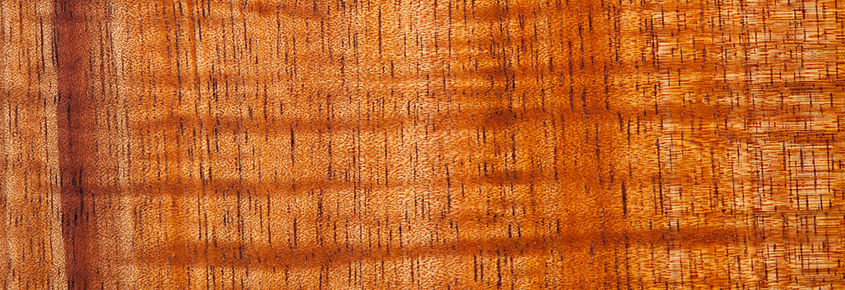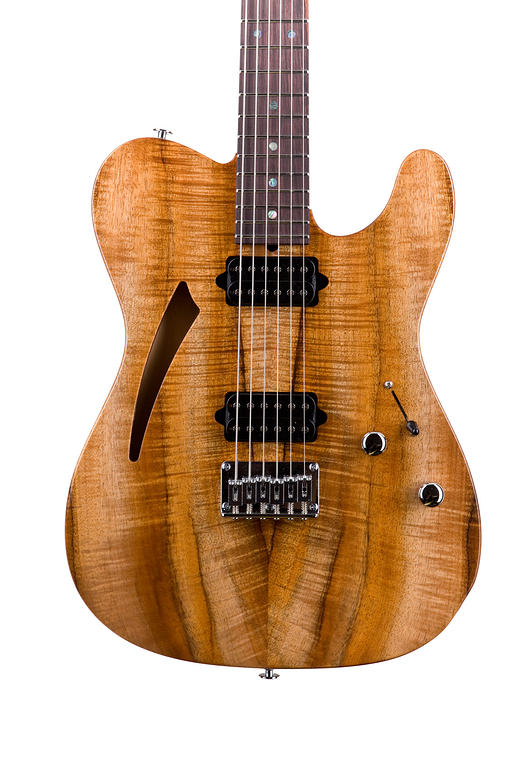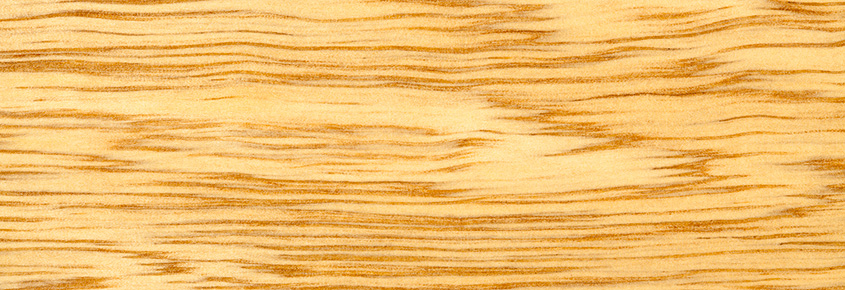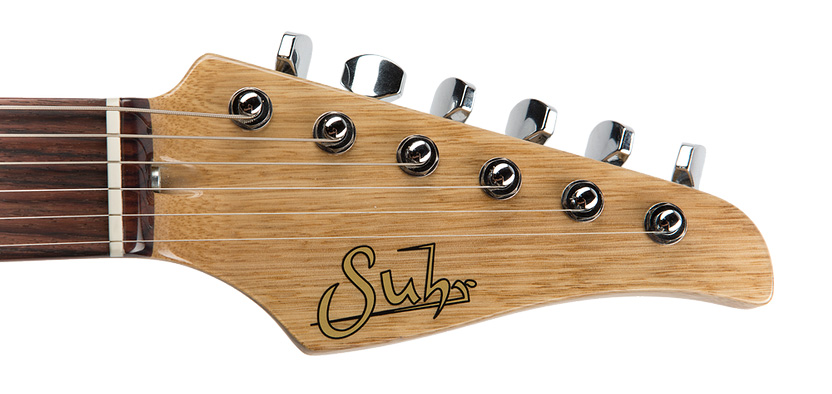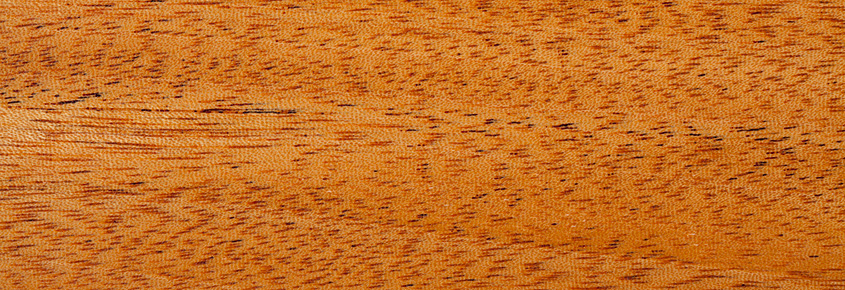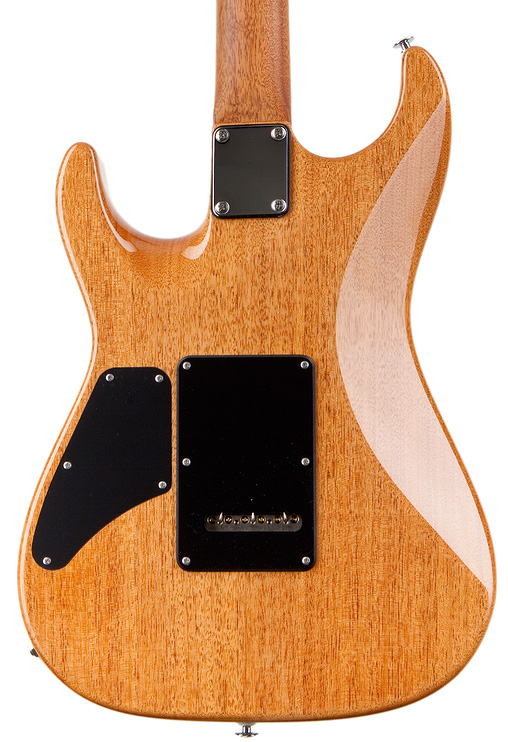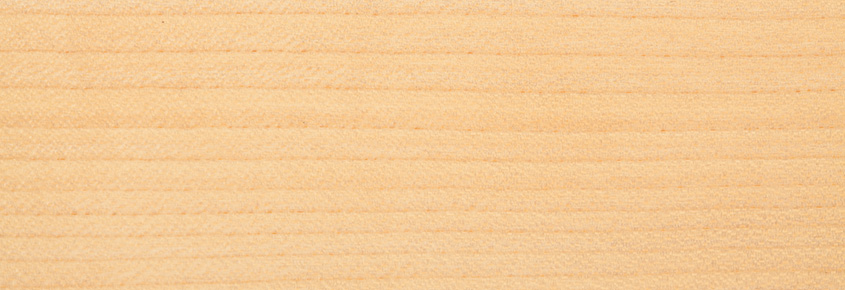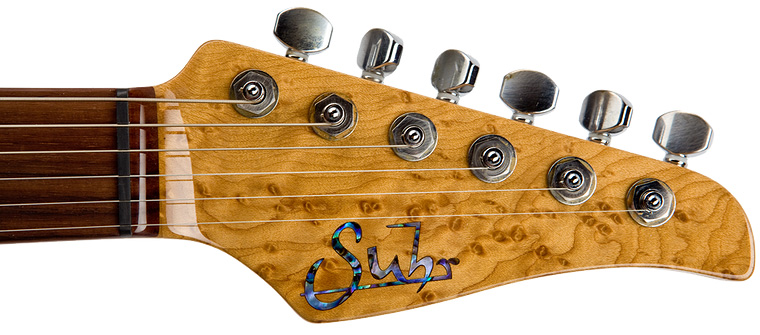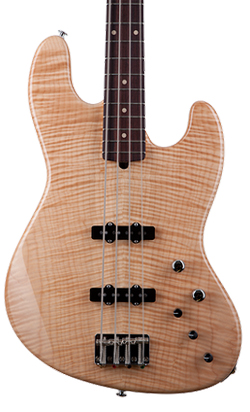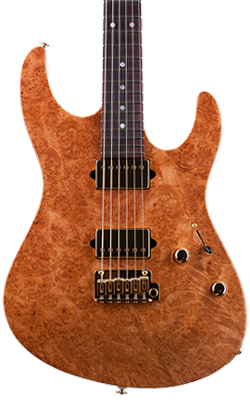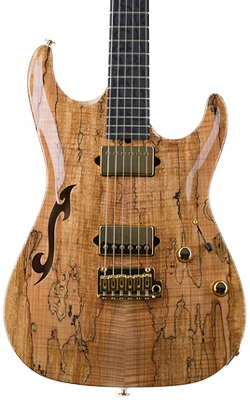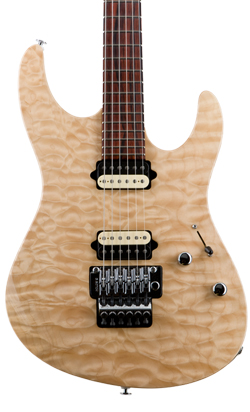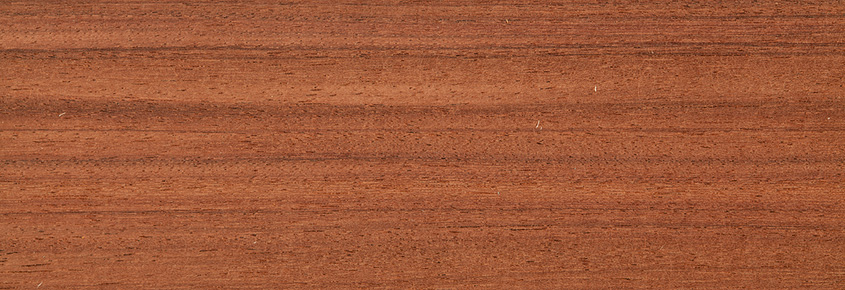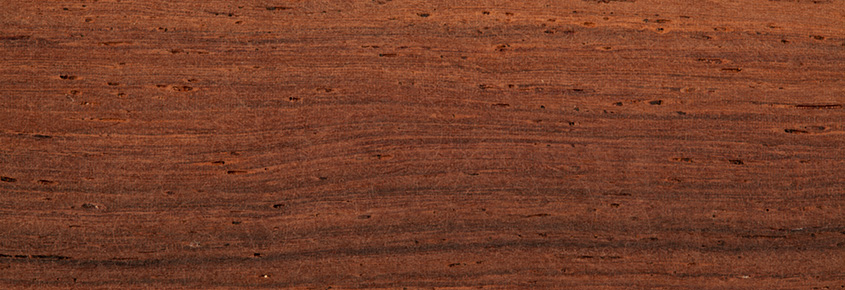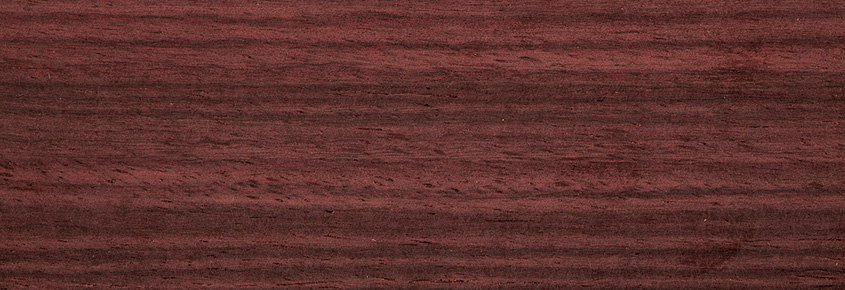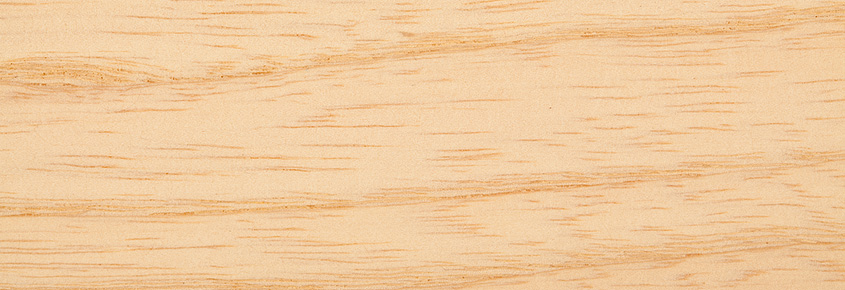| ALDER | |
| Alder was one of the most popular guitar body woods of the 1960’s. Grown all over the world, Alder is medium to light in weight with soft tight pores. It has a light tan color and can sometimes exhibit large swirling grain patterns and rings. Alder is favored by blues and rock players for its strong, clear, full-bodied sound, with beefy mids and excellent lows. Alder is used extensively for guitar bodies because of its light weight and its full sound. | |
| BASSWOOD | |
| Native to Asia, Europe, and North America, Basswood gained prominence as a favored tone wood for shredders in the 1980’s. It is light in color and weight with almost no grain pattern. It is best suited for solid colors or as a backing wood for a figured top. Basswood bodies have a fat, well-balanced tone that produces smooth sounds without any hard edges. | |
| COCOBOLO | |
| Cocobolo is a rosewood found in Central and South America commonly used to make fingerboards and necks. It is a colorful wood, with unique swirling grain patterns of oranges, reds, purples, browns and blacks. It is extremely resonant with tight, punchy lows and brilliant highs. Cocobolo is widely considered to have similar tonal characteristics to Brazilian Rosewood. | |
| KOA | |
| Koa comes exclusively from the island of Hawaii. It is medium to heavy in weight, and can exhibit defined curly and flamed grain patterns. Koa produces rich, clear tones with focused upper-mids. It has a warm sound similar to mahogany, but is generally brighter with tighter lows. Koa’s focused tone makes it popular among rock and metal players. It is also an ideal top wood for a chambered body. | |
| PAU FERRO | |
| Normally found in Brazil and Bolivia, Pau Ferro is a tight grained hardwood that has a similar feel and sound to rosewood, but is harder and slightly lighter in color. Pau Ferro has a percussive attack, excellent clarity, a fat low-end and a pronounced high-end sparkle. These characteristics make Pau Ferro particularly well suited to high gain styles such as rock and metal. | |
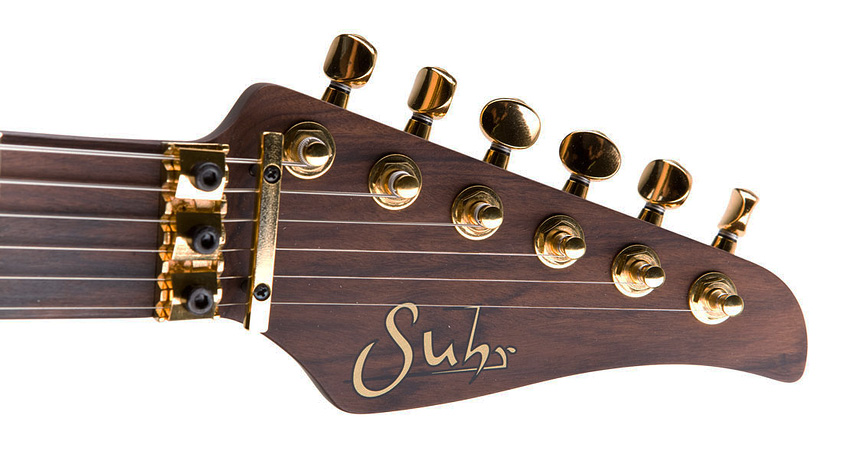 |
| AFRICAN ROSEWOOD | |
| Originally from West Africa, African Rosewood is tight-grained and rich in color that varies widely from light red brown to almost black. Strong in the upper-mids, African Rosewood is brighter than Indian Rosewood. It is a great fingerboard wood for clarity, balance, and adding brilliance to a darker body wood. | |
| INDIAN ROSEWOOD | |
| Being one of the most popular fingerboard woods for guitars, Indian Rosewood is usually sourced from either India or Bangladesh. It has a thick grain pattern with colors ranging from brown black, purple, to red brown. Indian Rosewood is particularly favored by blues and rock players for it’s thick, sweet tone. It has an ideal balance of fat lows, warm mids and a sparkling high end presence. | |
| SWAMP ASH | |
| Popular in the 1950’s for guitar bodies, Swamp Ash originates from the Southern parts of America, from trees whose root systems are under water. This wood is lightweight and porous. Its color is light with pronounced dark brown grain patterns which makes it ideal for transparent finishes. Popular with country, blues, rock and metal players alike, Swamp Ash is highly resonant and offers a nice balance of pleasant highs, firm lows, and a slightly scooped midrange. | |

